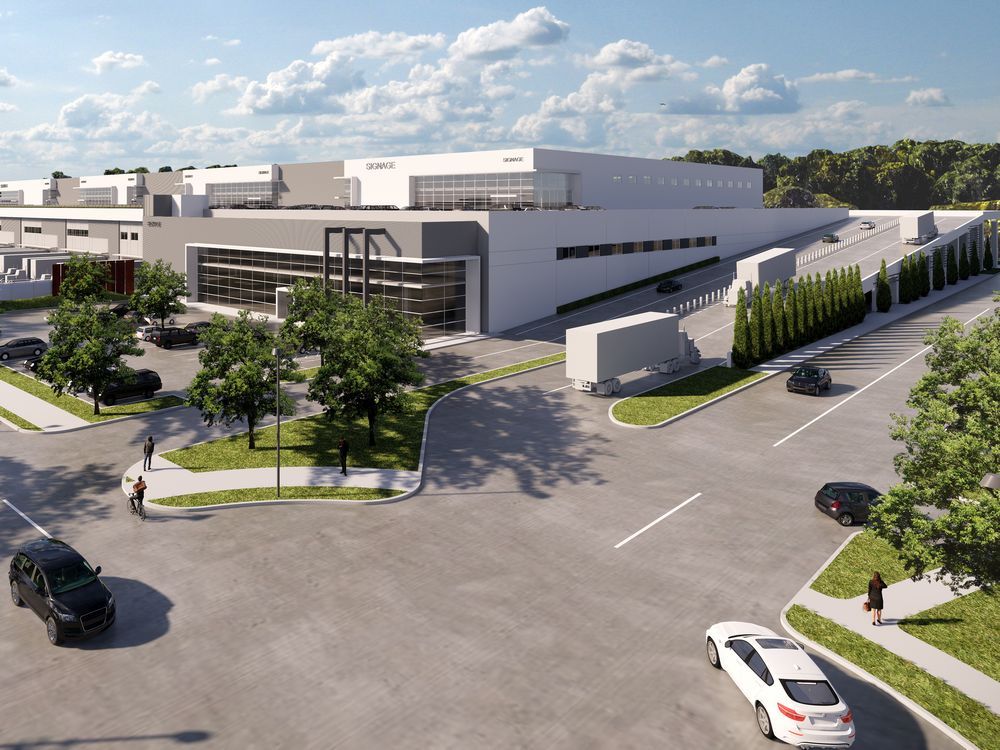Commercial Real Estate: Oxford to build Canada's first multi-level industrial building

Credit to Author: Hugh Dawson| Date: Thu, 14 Nov 2019 18:17:01 +0000
Oxford Properties Group has launched a new project in Burnaby that will become Canada’s first multi-level industrial building with full transport truck access to an upper floor, Postmedia has learned.
The global commercial real estate investor, developer and manager is set to start construction in the second quarter of 2020, with completion expected in 2022.
Located at Oxford’s 65-acre Riverbend Business Park in south Burnaby, the building will have 707,000 square feet over two levels at the site of a former paperboard milling operation.
Oxford purchased the land in 2011. The park is located close to the intersection of Marine Way and Highway 91A in Burnaby, next to the Fraser River.
Oxford said it removed more than 300,000 cubic metres of waste and debris from the property to make way for the now-operational business park.
The ground floor of the new building will have 437,000 square feet with 32-foot clear heights. The second storey, which is accessible to full size transport trailers via a heated ramp, consists of 270,000 square feet, 28-foot clear heights and a 130-foot truck court, said Jeff Miller, Oxford’s head of industrial in an exclusive interview with Postmedia.
There are several multilevel industrial buildings in the region, but all of them to date feature light industrial or office space on upper floors, and none have full truck delivery capability on an upper floor.
“This will be the first of its kind in Canada,” Miller said. “They have been built globally for 20-plus years, but only in the past couple of years have they received quite a bit of attention in North America.”
“You (will) have two independent well-functioning buildings that just happen to be stacked on top of each other, with the ramp,” Miller said.
The park already includes five industrial buildings and the new development phase will also include an amenity pier that stretches out into the Fraser River and walking trails that connect to the public trail system.
The building could be leased in various formats. One single tenant could take the entire space, or several tenants could be divided into units as small as 70,000 square feet.
Miller said passenger vehicles will be able to drive to the second floor along with delivery trucks hauling trailers up to 53 feet long.
The building would be ideal for a tenant or tenants in e-commerce-related warehousing or logistics business who need to be located near the core of the region for shipping, labour and infrastructure, Miller said.
Metro Vancouver’s sub-two-per-cent industrial vacancy rate and surging industrial land values has created a unique set of barriers to the market for developers and tenants.
“If you look at where multi-storey buildings have been built globally and where they may be built now in North America, you really need to start with land scarcity and expensive, very high barriers to entry,” he said.
Higher density industrial buildings are just the next step for the region.
“Vancouver definitely is one of the first (regions) that checks the boxes as far as economics and land scarcity in North America,” he said.
Vacancy and lease rates in the Greater Toronto Area would also suggest stacked industrial is coming there soon.
“You’re seeing them around the boroughs of New York, where you have such a massive population. There is one that went up in Seattle,” he said. “Maybe one in California, but it’s not going to be a widespread phenomenon.”
Canada’s first stacked industrial building with full truck delivery capabilities for the second floor. The project is in South Burnaby.